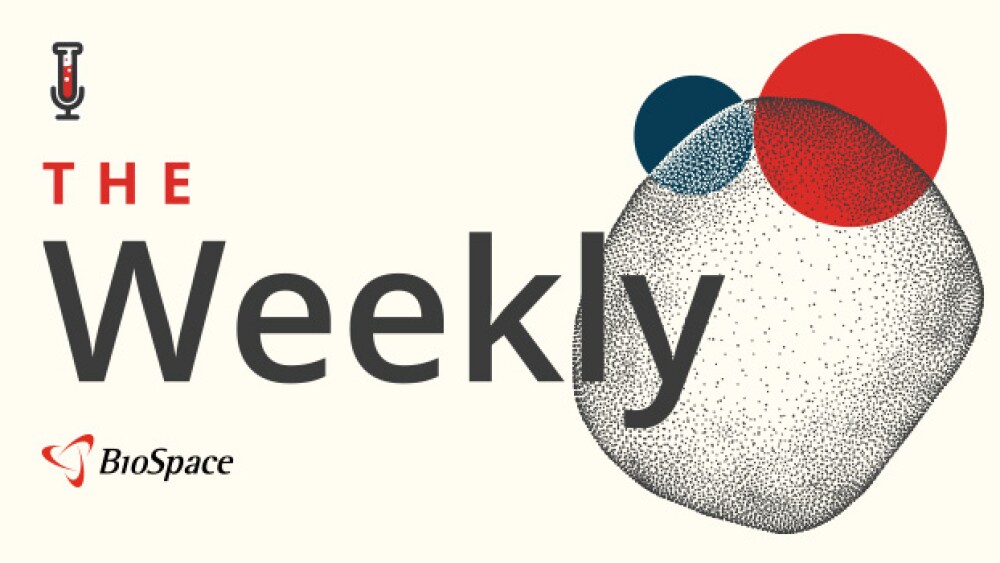J&J has a multi-year head start, but Gilead believes it can win market share by delivering a drug with better safety and at least as good efficacy.
Johnson & Johnson may face a new challenge to its burgeoning BCMA CAR T cell therapy empire. Having come from behind to capture the market from Bristol Myers Squibb, J&J is now preparing for the arrival of a fresh threat from Gilead’s anitocabtagene autoleucel (anito-cel). Gilead is targeting a 2026 launch for a cell therapy that it believes could expand the CAR T multiple myeloma market through outpatient use.
Billions of dollars are on the line. Carvykti sales hit $963 million last year and, having jumped more than 100% to $369 million in the first quarter, are on track to pass the blockbuster threshold this year. Visible Alpha’s consensus analyst estimate puts peak sales at around $7 billion in 2030.
Gilead has put a higher value on the overall CAR T multiple myeloma market. Talking at a Leerink event in March, Cindy Perettie, global head of Gilead’s CAR T unit Kite, predicted the market will be worth $15 billion to $20 billion in 2034. The forecast makes multiple myeloma a bigger opportunity for Gilead than its current CAR T stronghold in lymphoma, which Perettie forecast will grow to between $10 billion and $12 billion.
J&J has a multi-year head start, having first won FDA approval for Carvykti in 2022, but Gilead believes it can win market share by delivering a drug with better safety and at least as good efficacy. Manufacturing is the third piece of the plan, with Gilead using the infrastructure set up for its other CAR T cell therapies as a competitive advantage.
How Gilead Is Positioning Anito-cel
In May, Gilead’s anito-cel partner Arcellx shared updated Phase II data on the cell therapy as a fourth-line or later treatment for relapsed or refractory multiple myeloma. The overall response rate in the 117 patients was 97%. Almost 70% of patients had a complete response.
BMO Capital Markets analyst Evan David Seigerman said in note to investors that “anito-cel continues to demonstrate meaningful efficacy that is at a minimum comparable to Carvykti, with potentially better [overall survival] rates.” Seigerman compared anito-cel’s 12-month overall survival rate, 95%, favorably to the 89% rate in a Carvykti study.
Gilead’s belief that anito-cel may have a safety advantage rests on the relatively low rates of neurotoxicity seen in patients to date. Carvykti has a boxed warning for potentially life-threatening adverse events including Parkinsonism and Guillain-Barré syndrome. As of the May 1 data cutoff, no patients in the anito-cel trial had Parkinsonism, cranial nerve palsies, Guillain-Barré or immune-mediated enterocolitis.
Seigerman said the absence of delayed neurotoxicity “continues to increase our confidence in anito-cel’s safety profile.” The analyst cited the 1% rate of grade 3 or above cytokine release syndrome (CRS) and immune effector cell–associated neurotoxicity syndrome (ICANS), both of which are on Carvykti’s boxed warning, as another positive.
Perettie discussed the implications of the CRS and ICANS rate at a RBC Capital Markets event in May. The Gilead executive said only one in 10 multiple myeloma patients who are eligible for CAR T currently receive a cell therapy. Patients who do receive CAR T are admitted to hospital for four to five days, Perettie said. Gilead sees eliminating hospital stays as a way to increase uptake of CAR T among eligible patients.
“We now know some of the pieces that are going to help move that market, which is how we get closer to patients in the community,” Perettie said. “Ninety percent of myeloma patients sit in the community, only 10% in academic centers. Because it’s a more indolent disease, they don’t get referred to later and so reaching them where they are is important.”
Around 10% of patients in the Phase II trial have received anito-cel in an outpatient setting, Perettie said. Gilead has increased the proportion of outpatients in its Phase III trial to 20%. The company plans to use a network of more than 550 authorized treatment centers that it has built up globally for its other CAR T therapies to complement the outpatient option.
Gilead created the network to support its lymphoma cell therapies Yescarta and Tecartus. The biotech also plans to use the manufacturing capabilities it built for Yescarta and Tecartus to produce anito-cel and gain an edge over its rival. Gilead believes that the manufacturing network is a differentiator, reflecting the challenges of producing CAR T therapies using a patient’s own cells, CEO Daniel O’Day explained at a Bernstein event in May.
“We have the largest manufacturing network, the shortest turnaround time. You need to have a short turnaround time because people are put in an immunocompromised state while they’re waiting for their cells to come back, and you want to make sure you get those back as quickly as possible so you get the best clinical benefit,” O’Day said.
The Case for Carvykti
BMO analyst Kostas Biliouris has pushed back on the idea that cross-trial comparisons show anito-cel is safer and more effective than Carvykti. Writing in a note to investors, Biliouris said there are “significant differences” in the populations enrolled in anito-cel and Carvykti trials that could confound comparisons.
Three times higher corticosteroid use for CRS management in the anito-cel trial “further precludes direct . . . efficacy/safety comparisons,” the analyst said. Biliouris quoted real-world data and post-hoc analyses that suggest corticosteroid use could contribute to seeming differences in the safety and efficacy of the CAR T cell therapies.
Biliouris is bullish on Carvykti, reflecting the fact that J&J and partner Legend Biotech have shown statistically significant improvements in overall survival and are increasing use in earlier treatment lines. The FDA has approved Carvykti for second-line use. Gilead’s Phase III trial is enrolling patients who have tried one to three prior lines of therapy, including an anti-CD38 antibody and an immunomodulatory drug.
The analyst also cited Carvykti’s “differentiated [seven-day] CRS onset that facilitates outpatient dosing” as a strength of the cell therapy. J&J is running two trials that are allowing people to receive Carvykti as an outpatient. Patients initially stay within 30 minutes of the hospital but are admitted as inpatients on day five of the studies, reflecting knowledge of the timing of CRS and other adverse events.
Gilead’s outpatient offering may prove more flexible and attractive to patients, but in J&J it will face a deep-pocketed incumbent that is leveraging its head start to expand and entrench the use of Carvykti.






